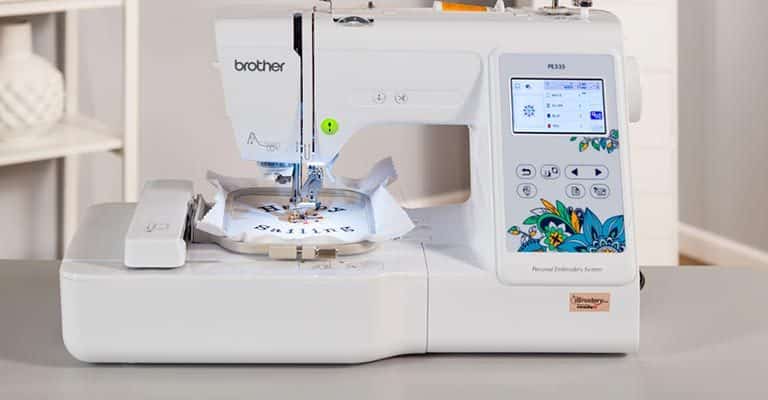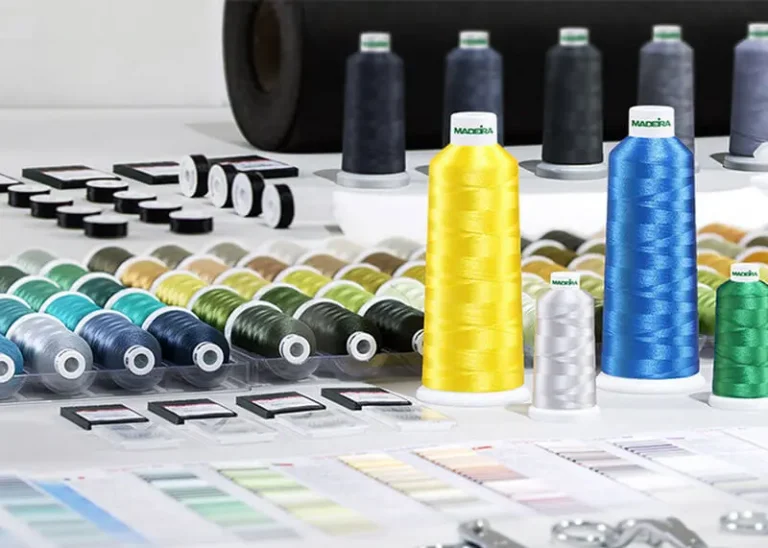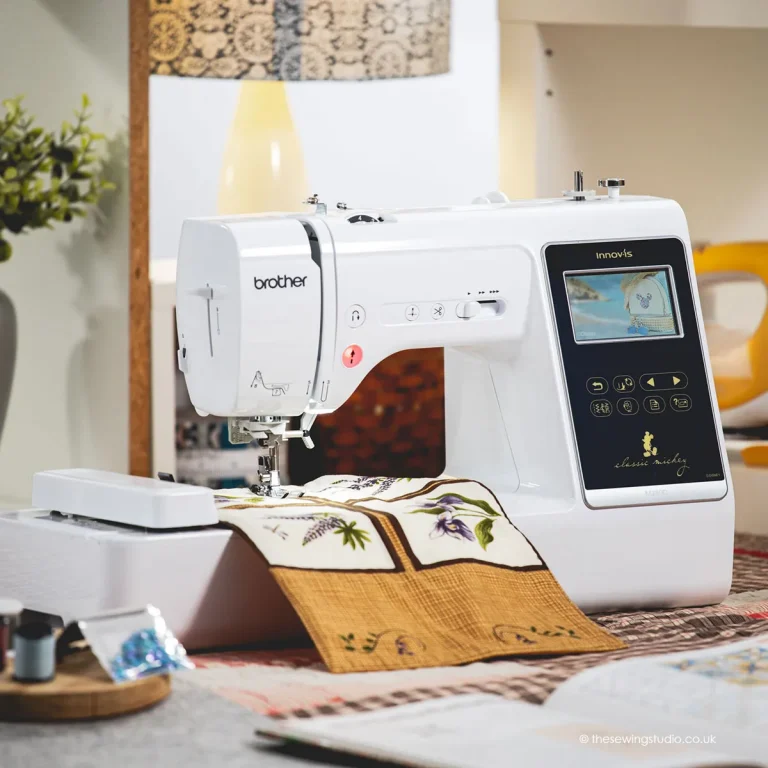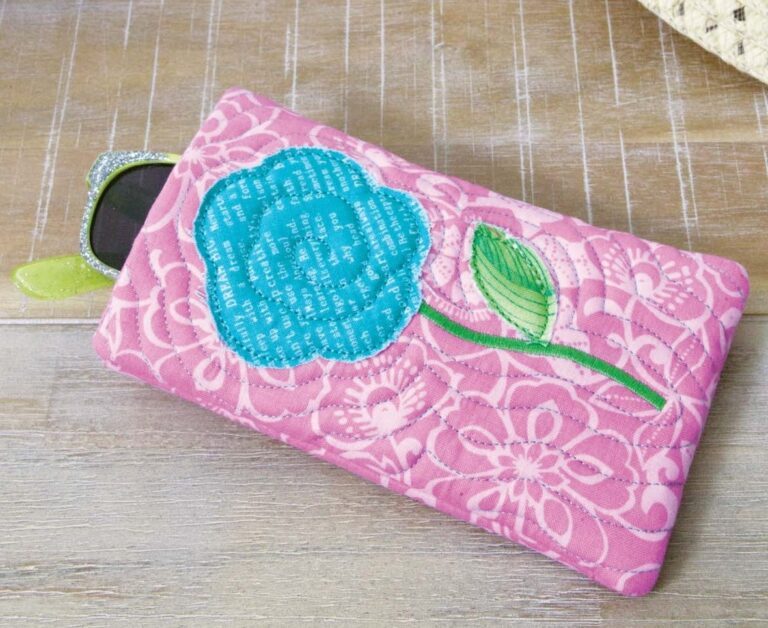Myth 8—Heat-fusible and sticky back tearaways area unit the most effective resolution for knits.
Reality
Fusible tearaways provide a false sense of security as a result of they’ll keep the material from stretching throughout the hooping method. However, as stitches perforate the tearaway, it now not supports the material, which can then stretch. Instead, I like lightweight|a light-weight|a lightweight} weight liquified cutaway for light weight knits (often combined with a crisp tearaway) and a medium to serious cutaway with a short lived embroidery spray adhesive for heavier knits.
Myth 9—Looping is caused by poor digitizing
Reality
Looping is caused by maladjusted machine tensions. process is sometimes a lot of problematic in fills and running stitches with stitches longer than three.5mm. Some home machines don’t seem to be automatically capable of longer stitches in fills and compensate by programming in tension. However, this typically solely works on styles created in their software; outside or born-again styles won’t be corrected. (A sensible reason for selecting a multi-needle embroidery machine!)
Why do digitizers use longer stitches? Longer stitches (greater than three.0mm) in fills produce a lot of coverage with a softer feel, reduces sew count, and facilitate combat bullet-proof embroidery. Longer stitches may be the results of enlarging a style.
Myth 10—Bobbin thread force to the highest is caused by a foul design/poor digitizing
Reality
If you have got spool thread showing on the front of your embroidery, you have got a tension downside. rummage around for a spool thread tension that’s too loose and/or a needle thread tension that’s too tight. you’re presumably to search out this a lot of problematic in slim cloth columns and on the sides of fill areas wherever the stitches reverse direction.
While there area unit touch-up pens that area unit nice for infrequent repairs, the most effective resolution is balanced tensions. you will notice it useful to possess a second spool case that’s adjusted specifically for embroidery. And contrary to some dealers recommendation, you’ll not harm your machine if you alter the strain screw on the spool case.
Myth 11—All thread breaks area unit because of dangerous (poorly digitized) styles
Reality
While a thread break will occur from digitizing techniques, several occur for alternative reasons unrelated to the look, as well as the following:
Damaged needle
Old, dry thread, low-cost thread or injured thread from rough handling or dropping
Particular thread colors some dyes weaken threads a lot of (red, black)
Rough spot on machine (hook, throat plate) from a needle break
Poor thread feeding, jerk in thread throughout stitching
The two most typical causes of design-related thread breaks area unit short stitches (less than 1mm) and to a fault tight densities (stitches packed too closely together).
Myth 12—All needle breaks area unit because of dangerous (poorly digitized) styles
Reality
Like thread breaks, it’s doable to interrupt a needle in terribly thick area unitas however there are alternative reasons not associated with the design:
Damaged needle
Cheap needles
Needle too tiny for the material
Overly tight tensions, or a jerk within the thread throughout stitching will cause the needle to bend and hit the throat plate
Birds-nest, that may be a wad of thread increase below the ring because of a tension downside
I once stony-broke a wing needle in an exceedingly fil tire pattern which was most undoubtedly not a density issue!
Myth 13—Coffee filters, appliance sheets, and electric refrigerator wrap area unit utterly suited to backing and area unit a lot of economical
Reality
Once again, quality ingredients manufacture quality embroidery! the most effective embroidery results area unit achieved once victimisation applicable provides. Paper merchandise will uninteresting the needle {and will|and will} not give stability that correct backings can, whereas appliance sheets have chemicals which will irritate sensitive skin.
Myth 14—You will sharpen uninteresting needles with fine sand paper.
Reality
Yes, believe it or not, I found this gem on the web on a website dedicated to stitching. Needles area unit preciseness instruments that area unit a crucial and integral a part of the machine necessary to make correct stitches. Why waste your time? Needles purchased in bulk area unit terribly economical.
Myth 15—Testing styles may be a waste of time; {the style|the planning|the look}er has already totally tested the design
Reality
The designer tested the look on her machine along with her material and thread. Even once I in person digitized a style that has been stitched again and again within the past, I still retest once stitching it afresh. Testing is crucial to form positive the look transferred properly to your machine.
Card based mostly machines area unit a lot of prone to corrupted styles once the look encompasses a high sew count. If there’s an influence fluctuation (which might be associate iron or cooling turning on), it should cause the look to transfer improperly. The larger the look, the longer the transfer time and also the larger the potential for a fault.
That your machine is working properly (tension check).
The design works well with chosen material texture/colour (test for shrinkage!), thread colors, and backing and hooping ways.
Myth 16—When creating observe piece, you’ll be able to use regular stitching or sewing machine thread and any material minded haphazardly within the hoop, and you’ll be able to skip the backing. This conserves expensive embroidery provides.
Reality
Testing this manner may be a waste of your time and resources. the aim of a check is to form positive that every one your picks work along successfully!
Myth 17—Any style will be scaled a minimum of by [*fr1] or double its original size and still sew with an equivalent quality because the original. The digitiser ought to guarantee that the look will be scaled any size and with any complete of resizing program.
Reality
If digitizers had to ensure this you’d see pretty boring styles. Beautiful, intricate, and fascinating styles ar created with a large vary of sew varieties and lengths, which may cut back the measurability of a style. as an example, if the look has stitches of one metric linear unit, it shouldn’t be reduced in size. Stitches longer than 10-12 metric linear unit might cause stitching issues if the look is enlarged.
You will get the most effective results if you have got an equivalent code within which the look was created, that is sort of rare unless you created the look yourself. consequent best choice is to use a decent resizing program that features a sew processor.
Be aware that some sew processors can cause the loss of custom sew patterns in fills. Even with either of those situations, the business tips for resizing aren’t any a lot of that 2 hundredth up or down. Scaling on the far side 2 hundredth may end up in details that aren’t any longer proportionate, gaps/holes in styles wherever stitches don’t seem to be properly recalculated, and descriptions not registering properly.
Without a sew processor, the suggested easy lay is 100 percent up or down.
Whatever quantity you scale the look, recognize that you simply ar sterilisation that style from the approach the digitiser created it and every one bets ar off, thus to talk. continuously check resized designs!
Resizing is perhaps the foremost oft-made amendment to a style and whereas you will assume it’s a trivial task, it will be quite an challenge once drained foreign code.
Myth 18—Embroidery styles for home machines do not would like underlay. (Hard to believe, however this one came from a competitor!)
Reality
Machine sort isn’t a determinant for underlay! consider it this way: a shed wants support framework as will a mansion. Underlay necessities ar primarily determined by:
Stitch sort
Fabric sort
Desired impact
Impact of higher stitches on the material
Unless a style was digitized within the same code you’re mistreatment, it’s unlikely you may be able to modify the underlay while not some digitizing expertise, and even then, it isn’t probably to be simple.
A similar story i am currently hearing in some on-line code categories is that if a style is simply too thick, you ought to simply get obviate the underlay to lighten it up. likelihood is that that if a style is simply too thick, it’s the higher layers of the look that ar too dense and/or there ar too several layers of stitches in a neighborhood.
Removing the underlay is like taking the framework out of your house, it’ll solely build the remainder of the structure a lot of shaky. Instead, cut back the density within the cowl stitches and make voids (holes) beneath stacks of components.
Myth 19—You should use an equivalent complete and colors listed on the color sequence directions for the look.
Reality
There aren’t any thread color police! you will use any complete, any color however confirm the thread size is that the same. you’ll even interchange fabric and polyester threads while not a lot of issue (unless one is employed for a special technique). To convert between thread brands, seek advice from thread color databases on the online or check your code.
Be sure to check your color combos 1st if the shading is vital, like in a very realistic animal or flower as a result of there’ll be variations between brands. Note that if you substitute two-colour twist (not variegated), these threads ar generally thirty five weight and can build your style feel slightly thicker and stiffer if the color sequence needed forty weight.
Myth 20—Embroidery is as easy as golf stroke some material within the hoop, loading some embroidery thread, and pushing some buttons.
Reality
Only if you’re terribly lucky! productive embroidery results require:
Knowledge
Patience
Preparation
Attention to detail!
Parting comments
Don’t believe everything you hear particularly off the internet! make certain to judge the supply of the knowledge for responsibility and skill. Even tough lecturers have learned cant and techniques and will pass them on.
Be sure to use the provides and accessories created for embroidery. this is often the fastest and simplest way to boost your embroidery. higher provides equals higher embroidery, or as they are saying within the pc world, garbage in, garbage out.”
Always detain mind that embroidery could be a method not AN event! begin easy and tiny so you’ll expertise success and not frustration. Then proceed at your own pace and check out to be told one thing new every session.
As I continuously tell my students, build it sew otherwise you will not recognize. i actually believe there ar 2 forms of embroiderers: those that check, and people WHO would like they had!
Practice does not build good however it will cause you to quicker and higher and it teaches you solutions to issues. do not be fearful of mistakes, instead, use them as learning tools. a number of the good tricks I learned were from a mistake!
Related Posts
Discover relevant articles, tutorials, and tips to improve your skills and explore new techniques.
Stay inspired and connected to our embroidery community.







This is a topic which is near to my heart… Take care!
Amazing! Its in fact awesome piece of writing, I have got much clear idea on the topic of from this piece of writing.
you’re in reality a good webmaster. The website loading pace is incredible.
It sort of feels that you are doing any unique trick.
Furthermore, The contents are masterpiece.
you’ve done a fantastic task in this subject!
Thank you for any other informative web site. Where else may I am getting that type of info written in such a perfect means?
I’ve a venture that I’m simply now working on, and I’ve been on the glance out
for such information.